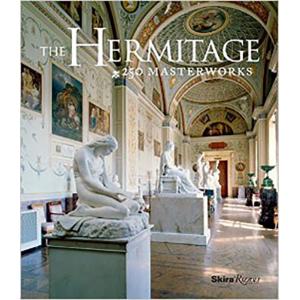The Master of the Sea
The Russian Museum in St. Petersburg held a retrospective exhibition of fifty-four major paintings by the artist from December 2016 to March 2017. Over three hundred-thousand people attended the exhibition.
One of the most successful Russian painters of the nineteenth century, Ivan Aivazovsky (1817–1900) garnered world fame as one of the greatest marine artists in history. During the span of his sixty-year career as a painter, he created more than six thousand works. Most of these paintings are kept in Russian, Ukrainian and Armenian museums today, as well as private collections. He was highly respected among his piers for the exceptional quality of his work, so much so that the great Russian writer Anton Chekhov (1860-1904) popularized the saying “worthy of Aivazovsky’s brush,” which is used in Russia to describe something “ineffably lovely.”
Born into a family of Armenian merchants in Crimea along the Black Sea, Aivazovsky dedicated his life to marine painting, becoming a master of historical battle scenes dedicated to the Russian Navy. A local architect funded Aivazovsky’s education, which allowed him to study at the Imperial Academy in St. Petersburg from 1833-39 and at the studio of French marinist F. Tanner from 1835-36. After receiving numerous medals for his work he graduated from the Imperial Academy in 1839 with a first class degree and a scholarship to study in Europe. From 1840-44 he traveled throughout Europe, Malta, the Middle East, Africa and America. Upon his return to Russia in 1844, he was appointed the main painter for the Russian Navy. That same year Aivazovsky became a Full Member of the Imperial Academy. He was an honorable member of Academies of Arts in Amsterdam, Rome, Paris, Florence and Stuttgart.
Aivazovsky spent many years in his studio by the sea in Crimea, where he was able to observe the water. His paintings were created from his memory and were not done from life. Aivazovsky’s early work consisted of small sailing vessels and travellers admiring the sea from its shores. His mature work was on a large scale and contained dramatic plots depicting the romantic struggle between man and the elements in the form of the sea (The Rainbow, 1873), as well as paintings referred to as "blue marines" (The Bay of Naples in Early Morning, 1897 and Disaster, 1898). Aivazovsky is one of the few Russian masters to receive fame and recognition during his lifetime. He held numerous solo exhibitions in Europe and the United States; and his portrait was on display at the famous Ufizzi Gallery in Florence, Italy during his lifetime. In 1880, he opened an art gallery in the town of Feodosia in Crimea, which is still open today and called the I. Aivazovsky Feodosian Art Gallery. When he died he bequeathed all his paintings to the city of Feodosia.

"Ninth Wave," 1850, oil on canvas

"The Rainbow," 1873, oil on canvas

"The Wave," 1889, oil on canvas

"The Bay of Naples in Early Morning," 1897, oil on canvas

"Disaster," 1898
Fine Art Prints Available by this Artist!
About the Author
Cathy Locke is an award-winning fine art painter, professor, lecturer and published writer, who specializes in Russian art of the 19th and 20th centuries. She is the editor of Musings-on-art.org.
Cathy Locke’s artwork – www.cathylocke.com









